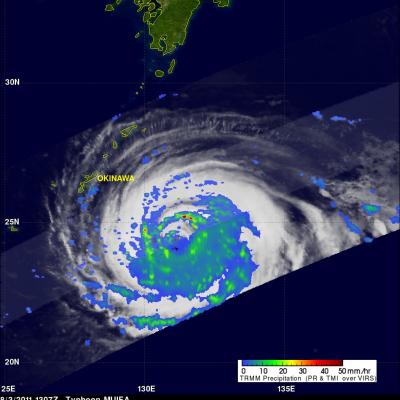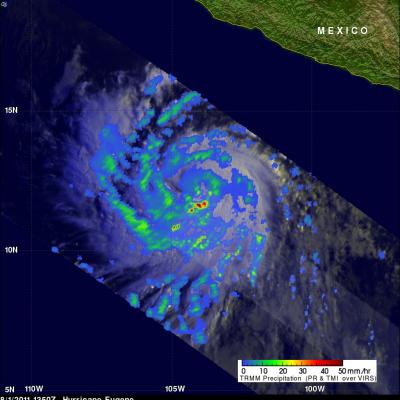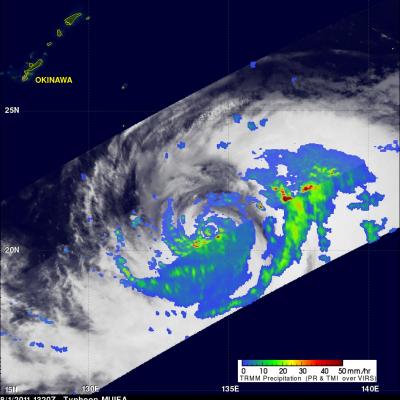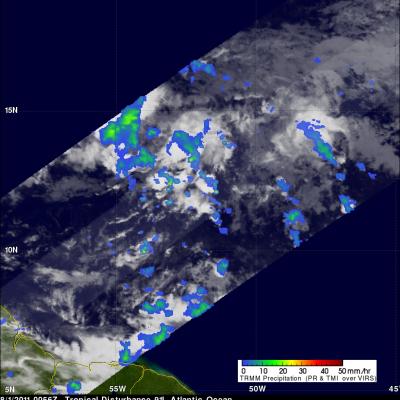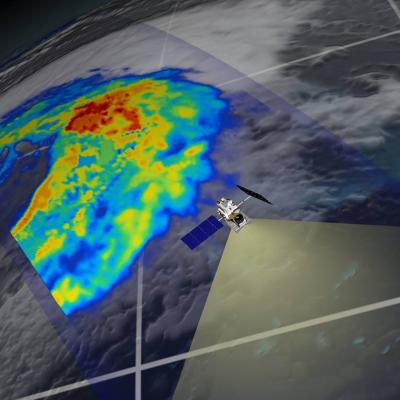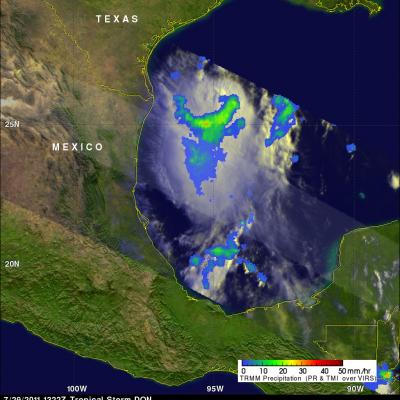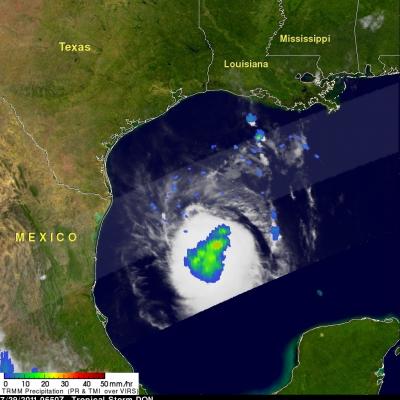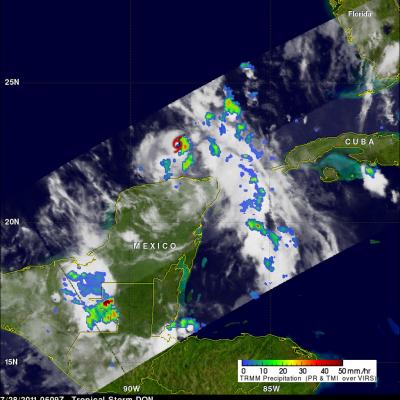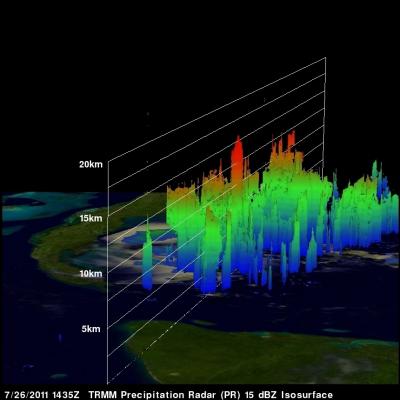Typhoon Muifa To Affect Okinawa
Typhoon Muifa had wind speeds of about 95 kts (~109 mph) when the TRMM satellite passed above on 3 August 2011 at 1307 UTC. Muifa is now predicted to pass just to the south of the Japanese Island of Okinawa. The southern tip of the Okinawa is expected to be in the right front quadrant of the typhoon on 5 August 2011 where the highest winds are normally located. TRMM's Microwave Imager (TMI) and Precipitation Radar (PR) data were used in the rainfall analysis shown on the right. See earlier TRMM information about typhoon Muifa.


